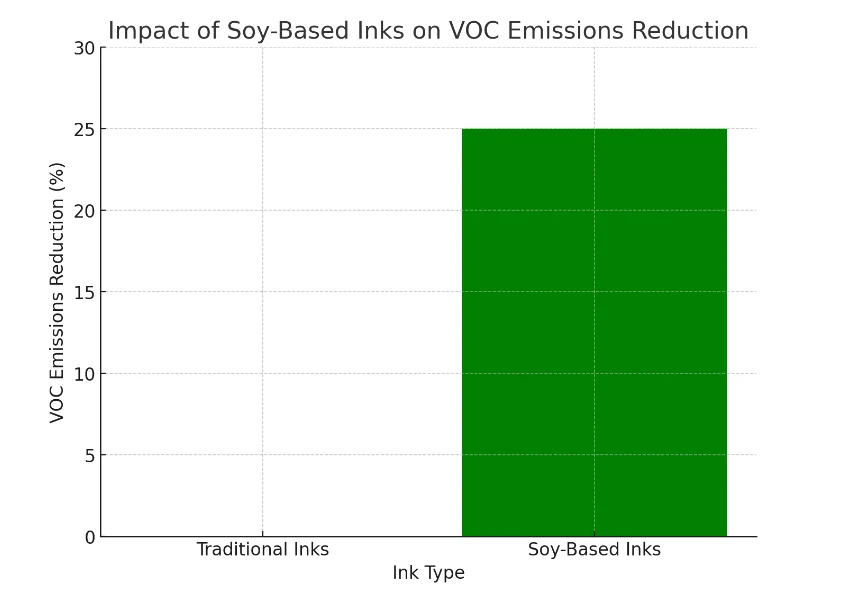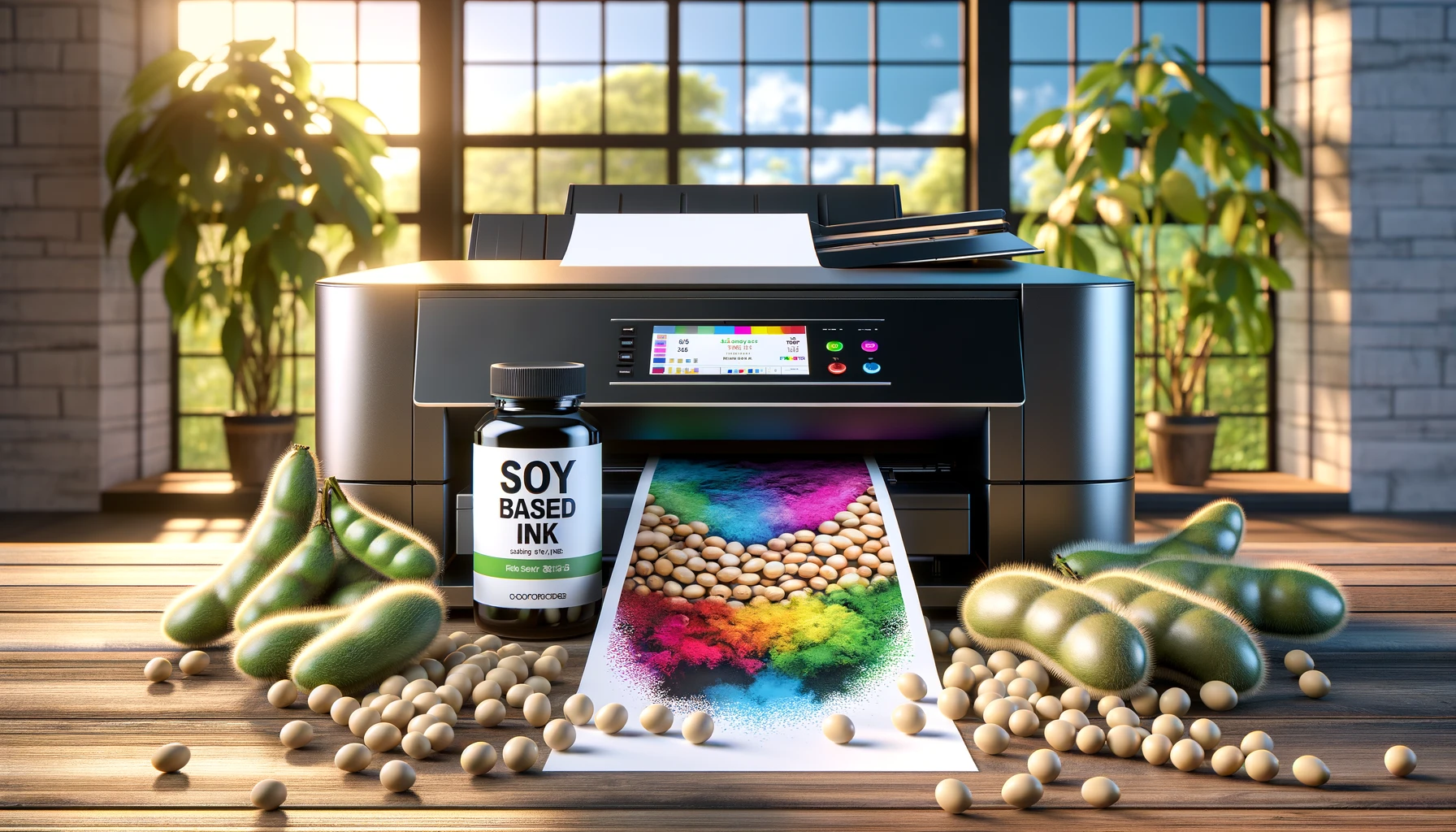My Journey into Soy-Based Inks: Embracing an Eco-Friendly Printing Revolution
Join me as I explore soy-based inks, a greener choice for printing. Learn about their benefits, how they compare to traditional inks, and their impact on the environment. Discover how these inks are changing the printing industry for the better, one page at a time.
In the vibrant printing world, the drumbeat for sustainability grows louder each day. Among the chorus of eco-friendly solutions, soy-based inks have emerged as a powerful alternative to traditional petroleum-based inks, painting a greener future for the printing industry.
Understanding Soy-Based Inks
Soy-based inks are made from soybeans, a renewable resource. They offer an environmentally friendly alternative to conventional inks that rely heavily on petroleum. The production process involves refining soy oil, which is then pigmented to create vibrant inks that are both sustainable and effective in printing.

Why Are Soy-Based Inks Considered Eco-Friendly?
The environmental benefits of soy-based inks are significant. They emit lower volatile organic compounds (VOCs), reducing air pollution and healthier working conditions. Additionally, soy inks are more accessible to de-ink during the recycling process, enhancing the recyclability of printed materials and reducing the environmental impact of paper waste.
Soy-Based Inks vs. Other Inks
| Feature | Soy-Based Inks | Petroleum-Based Inks | Water-Based Inks | UV-Curable Inks |
|---|---|---|---|---|
| Environmental Impact | Low VOC emissions, highly degradable | High VOC emissions, less degradable | Low to moderate VOC emissions, variable degradability | Low VOC emissions, instant curing reduces energy consumption |
| Yield | High yield, less ink needed for vibrant colors | Lower yield, more ink needed for similar color intensity | Moderate to high, depending on the formulation | High yield, efficient use due to instant curing |
| Color Intensity | High, vibrant colors with less ink | High, requires more ink for similar vibrancy | High requires more ink for similar vibrancy | Very high, vibrant colors with excellent finish |
| Versatility | Excellent, works on a wide range of substrates | Good, but limited by environmental and health concerns | Good, works well on porous substrates | Excellent, adheres to a broad range of materials |
| Substrate Compatibility | Wide range, including paper, cardboard, and fabric | Primarily paper and some plastics | Best with porous materials like paper and fabric | Extremely versatile, including plastics, metals, glass, and more |
Benefits of Soy-Based Inks
- Eco-Friendly: Emit significantly lower volatile organic compounds (VOCs) levels than traditional inks, reducing air pollution and enhancing workplace safety.
- Highly Degradable: Easier to de-ink during the recycling process, improving the recyclability of paper and reducing waste.
- Vibrant Colors: Provide brighter, more vivid colors with less ink required, enhancing the visual appeal of printed materials.
- Renewable Resource: Made from soybeans, a renewable resource, reducing dependency on petroleum-based products and minimizing environmental impact.
- Versatile Applications: Effective on various substrates, including paper, cardboard, and fabric, offering flexibility in printing projects.
- Energy-efficient: It requires less energy to produce and can be dried or cured at lower temperatures, contributing to overall energy savings.
- Safe and Non-Toxic: Generally safer for people and the environment, posing fewer health risks than conventional inks.
Purchasing Soy-Based Inks
How to Choose the Right Way
Selecting it requires considering factors like substrate compatibility, desired color vibrancy, and drying time. Matching the ink with the project’s specific needs is essential for optimal results.
Where to Buy It
Many reputable suppliers and brands offer high-quality products. When choosing a supplier, look for companies with strong environmental policies and a commitment to sustainability.
If you’re curious about it, user reviews and testimonials can be a helpful resource to learn about their performance and reliability.
Using Soy-Based Inks
Tips for Printing
- Printing with it can be slightly different from using traditional inks.
- Preparing the substrate properly and adjusting the drying time are crucial to ensure a smooth printing process.
- Mixing colors with it can yield vibrant results, making them ideal for creative projects.
Using for Inkjet Printers
Using ink formulated from soybeans is an innovative step towards more sustainable digital printing. This ink offers an eco-friendly alternative to traditional petroleum-based inkjet inks and provides several benefits, including lower VOC emissions, improved degradability, and reduced environmental impact.
Although still in the development phase for widespread inkjet application, soy-based ink promises to offer vibrant colors and compatibility with various paper types. It is a promising option for eco-conscious consumers and businesses looking to reduce their carbon footprint in digital printing.
Troubleshooting Common Issues
Common issues with it, such as drying time and ink adhesion, can often be resolved with adjustments to the printing process. Experimenting with different substrates and printing conditions can help find the optimal setup for each project.
Exciting Stats and News for Soy-Based Inks
- Rapid Market Growth: The global market for soy-based inks is expected to witness significant growth, with projections suggesting an annual growth rate of over 5% in the next five years. This surge is attributed to increasing demand for environmentally friendly printing options and stringent regulations on VOC emissions.
- Environmental Milestones: A recent study highlighted that switching to soy-based inks can reduce VOC emissions by up to 25% in the printing industry. This reduction is crucial in improving air quality and reducing the sector’s environmental footprint.

- Innovation in Recycling: Research indicates that paper printed with soy-based inks is more accessible to de-ink during recycling than paper printed with petroleum-based inks. This advantage has increased printed materials’ recycling rates, creating a more sustainable printing ecosystem.
- Corporate Adoption: Leading publishers and packaging companies are transitioning to soy-based inks, citing environmental benefits and the superior quality of prints. Reports show that soy ink improves paper’s recyclability and enhances printed colors’ vibrancy, making it a preferred choice for high-quality printing projects.
- Legislative Support: Governments worldwide increasingly support using soy-based inks through incentives and regulations. For example, certain jurisdictions offer tax breaks and subsidies for businesses that opt for eco-friendly inks, aiming to encourage a shift towards more sustainable printing practices.
The Environmental Impact
Soy Ink and Sustainability
The shift to soy-based inks represents a significant step towards reducing the printing industry’s environmental footprint. By choosing soy inks, businesses and individuals contribute to a cycle of sustainability, promoting renewable resources and supporting eco-friendly printing practices.
In conclusion, soy-based inks offer a compelling alternative for those seeking to combine high-quality printing with environmental responsibility. As the printing industry continues to evolve, adopting it will play a crucial role in shaping a more sustainable future.
Whether you’re a business owner, designer, or environmentally conscious consumer, embracing soy-based inks is a step towards contributing to a healthier planet.
Embark on Your Eco-Friendly Printing Journey
The journey towards sustainable printing is a choice and a commitment to future generations. By choosing this ink, you’re not only enhancing the quality and vibrancy of your prints but also making a positive impact on the environment. For more read about Guide to Soy Ink & Soy-based Ink.
Explore the possibilities with soy-based inks and join the revolution in eco-friendly printing practices. Together, we can print a brighter, greener future.






